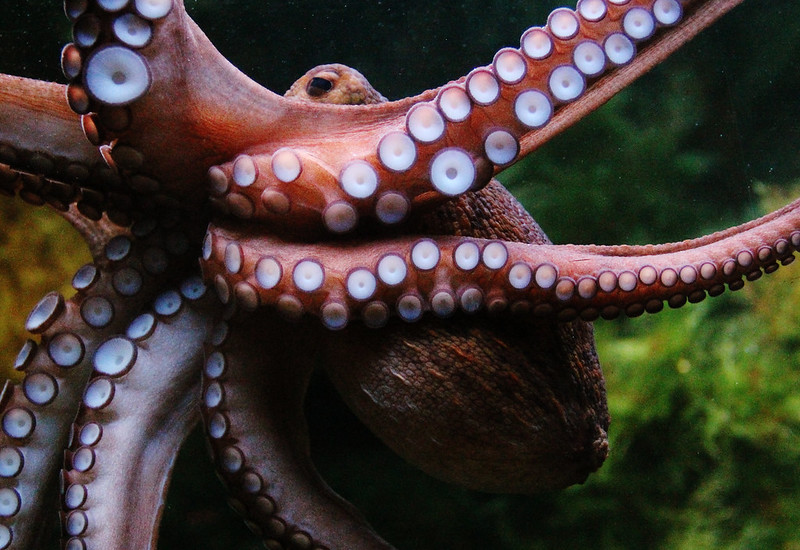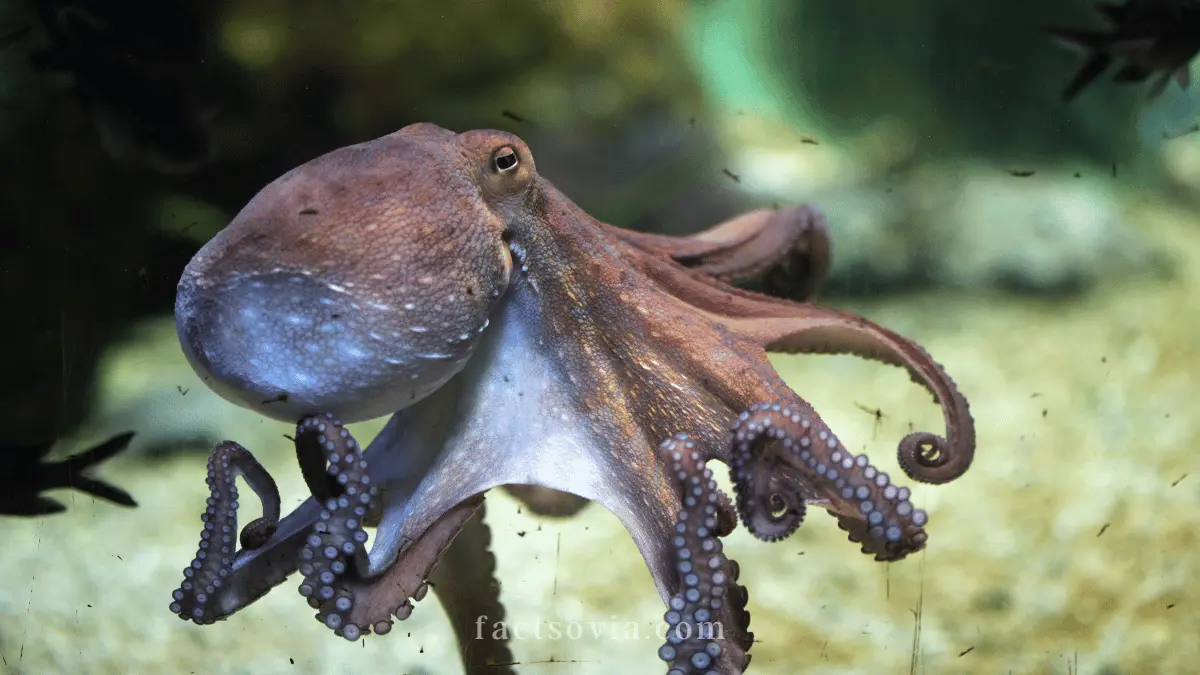We use affiliate links to run our site. When you buy through links on our site, we may earn an affiliate commission, without any added cost to you. Learn more
Do octopuses have teeth? At first glance, it may seem impossible that a squishy, toothless invertebrate could bite through tough crab shells or shred sea urchins to bits. But the octopus is full of surprises.
Lurking in the center of their strange, suction-cupped arms is a secret weapon—the beak. Sharper than any shark tooth, this biological bolt cutter lets octopuses crack open clams, snip through fish, and chomp prey as tough as coconut shells.
How does this toothless creature possess such a mighty bite? Let’s unravel the mysteries of the octopus beak and discover how they devour prey without teeth. You’ll never look at an octopus the same way again!
Do Octopuses Have Teeth?
Nope, octopuses do not have teeth. They are invertebrates, which means they don’t have a backbone or bones. Without bones, there’s nowhere to attach teeth!
Instead of teeth, octopuses have powerful beaks that they use to bite and chew their food. The beak is located at the center of the arms, where the mouth is.
Octopus Beak
With their eight grasping arms, bulging eyes, and amazing ability to change color and texture, octopuses seem almost alien in appearance. Yet, these cephalopods are a vital part of marine ecosystems around the world.
Perhaps one of the most unique features of an octopus is its powerful beak, used to bite and chew prey.
Let’s dive deep into the anatomy and workings of this toothless wonder.
Octopus Beak Basics
- Located at the center of the arms, surrounded by the mouth
- Made of keratin, the same protein that makes up human fingernails
- The upper and lower mandibles work together like a parrot’s beak
- Incredibly strong and durable, able to bite through thick shells
- Edges are sharp for gripping, tearing, and cutting prey
The beak is a crucial evolutionary adaptation, allowing octopuses to feed on hard-shelled animals like clams, mussels, and crustaceans. But how does this beak work and compare to having teeth?
Beak vs. Teeth: The Octopus Advantage
Octopuses, along with all other cephalopods like squid and cuttlefish, are invertebrates. This means they lack a bony skeleton, so there is nowhere to anchor teeth. The beak offers many advantages:
- Strength: Made of keratin, one of the hardest biological materials, the beak can exert tremendous bite force. Researchers estimate giant octopus beaks can bite with force over 80 pounds per square inch, stronger than many reptile jaws.
- Durability: Unlike teeth, the beak resists abrasion from biting shelled animals. It holds its sharp cutting edges even when cracking hard materials.
- Replaceability: If damaged or worn down, the beak can regenerate, growing back sharper and stronger. Teeth are not replaceable.
- Flexibility: Without bones, the beak is flexible and can access prey in tight spaces. Solid teeth are rigid and fixed.
So while octopuses may seem toothless, their beaks give them an evolutionary advantage under the sea.
Octopus Beak Anatomy
Let’s take a closer look at the upper and lower mandibles that make up the octopus beak:
Upper Mandible
- Bird-like shape with a sharp point for spearing prey
- Hard, keratinized surface for gripping and cutting
- Lined with a softer, more flexible inner layer
- Powerful muscles attached for closing the beak
Lower Mandible
- Wide, robust shape to support crushing forces
- Keratinized exterior surrounds dense, flexible inner core
- Numerous strong muscles attached to open/close against the upper mandible
- Inner edges are sharp, allowing a scissors-like cutting action
Both mandibles intersect tightly to deliver a vice-like grip. They work in coordination to pierce, grip, tear, and shear prey.

How Do Octopuses Eat?
Octopuses are carnivorous and use a variety of techniques to capture prey, including their camouflage, jet propulsion, and grasping arms. Once prey is captured, how does the beak process food?
- The sharp point is used to drill holes into shells and exoskeletons.
- Serrated edges grip and tear meat into chunks.
- Hard materials are cracked and crushed between the upper and lower mandibles.
- The beak cuts food into smaller pieces for swallowing.
- Powerful muscles deliver force to bite off mouth-sized morsels.
- Jaw-like motions chew food thoroughly before it is ingested.
An octopus’s arms assist by manipulating food toward the beak. The suckers help grab and position prey for optimal beak access.
Octopus Diet
With their versatile beaks, octopuses can feed on a wide variety of prey, including:
- Crabs
- Lobsters
- Clams and mussels
- Snails
- Small fish
- Shrimp
- Other octopuses
Species with stronger beaks even feed on animals with durable shells, like whelks and cockles, which would be difficult for other predators to open.
No animal with a shell is truly safe from an octopus. They use their beak to access meat from barnacles, sea urchins, scallops, and even the occasional unlucky turtle.
The Beak in the Food Chain
While octopus beaks are well-adapted for predation, in the marine food web they can also end up as prey. Many animals feed on octopuses, including:
- Large fish like tuna and sharks
- Marine mammals such as dolphins, whales, and seals
- Sea birds like albatrosses
Can A Predator Eat Octopus Beaks?
When these predators consume octopuses, they typically eat the entire animal, beak and all. The keratinous beak withstands digestion and often fossils as evidence of the octopus being eaten.
So in one perspective, the beak is a predator itself. But it also succumbs to higher predators, highlighting the interconnectivity of ocean life.
Conclusion
The octopus beak is one of the most unique feeding tools in the ocean. Made of hyper-tough keratin, it can crush shells and bones in its sharp, vice-like grip.
The beak offers advantages of strength, durability, and flexibility that bones and teeth cannot provide. The next time you think about octopus feeding, remember the power in their toothless, keratinous jaws!
If you like this article share the surprising abilities of the octopus beak with your friends. Explore our website for more fascinating facts about ocean life.
And maybe next time you eat calamari, take a moment to appreciate the incredible strength of the octopus even without teeth!
Amazon and the Amazon logo are trademarks of Amazon.com, Inc, or its affiliates.
